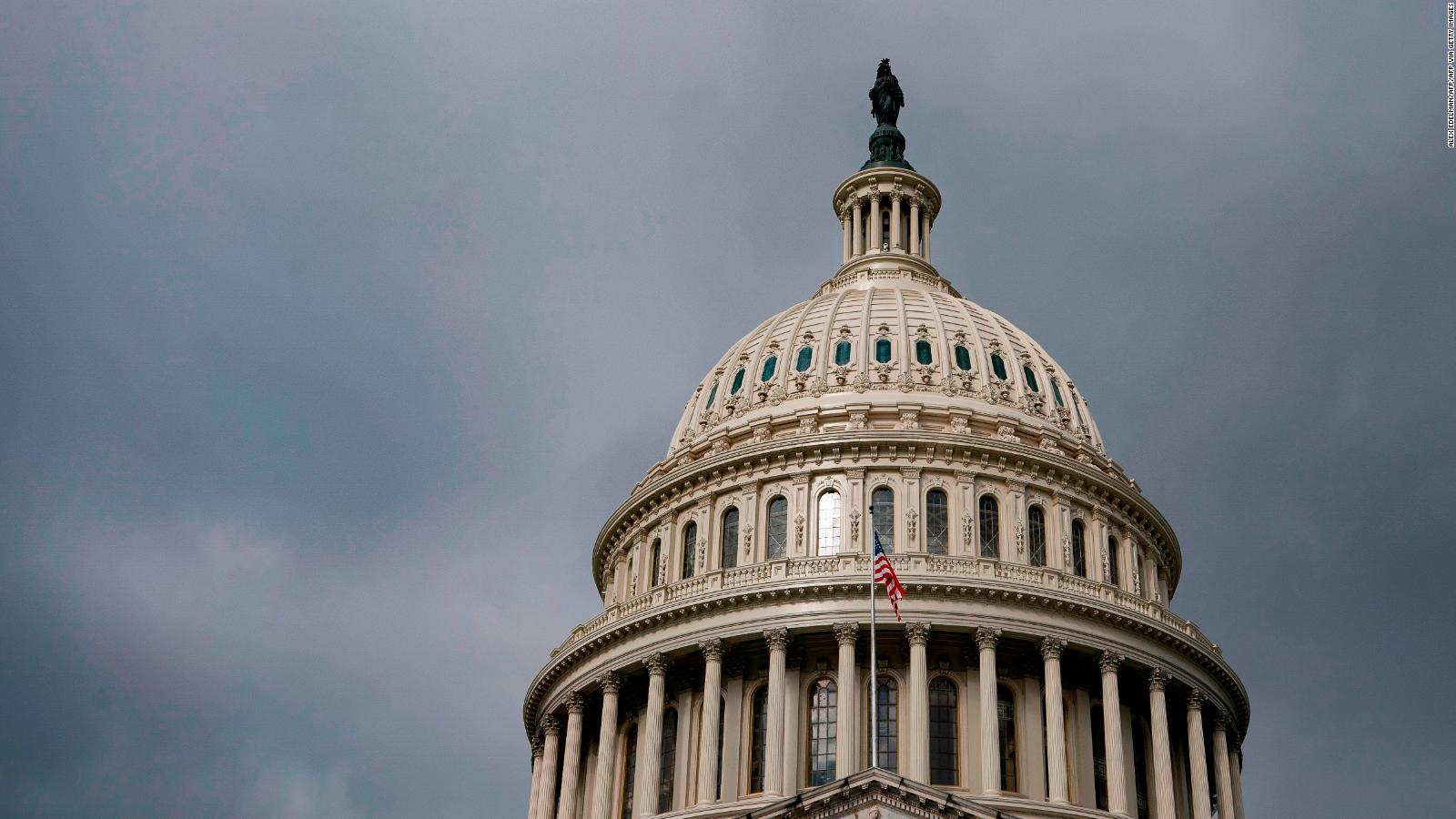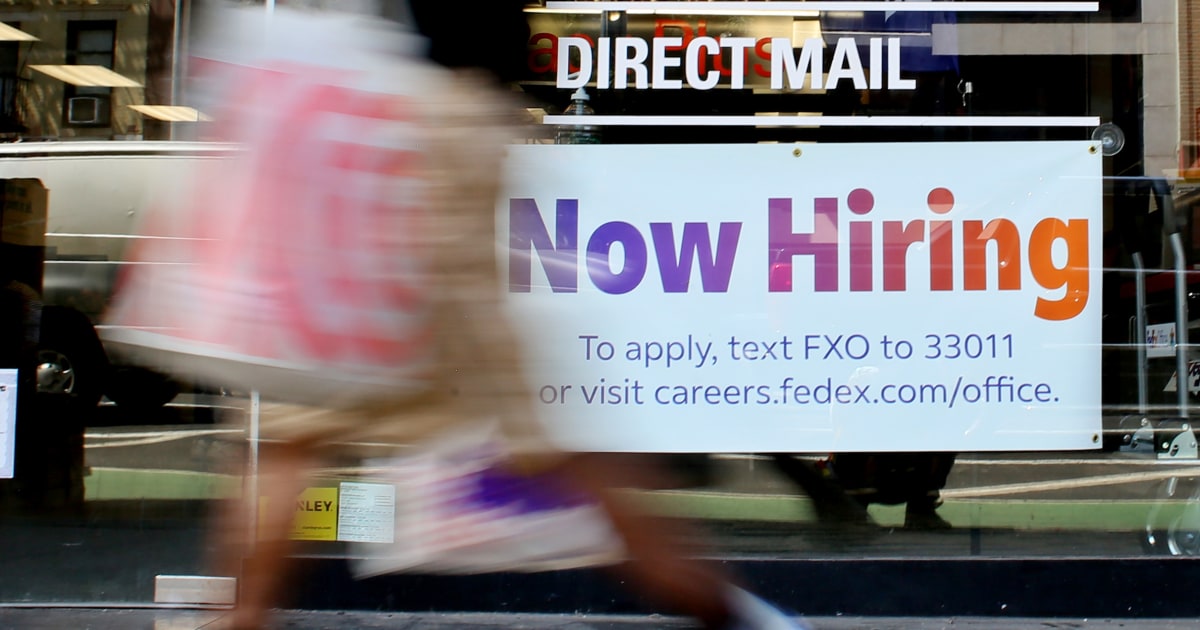If subsidies end in the US, will there be another stimulus package? 1:20
(CNN) - After days of cross-party disputes and divisions have been brought into public view, Senate Majority Leader Mitch McConnell will present an initial unified Republican proposal for $ 1 trillion coronavirus relief.
There is now a test funding agreement that marks a compromise between the Senate Republican Party and the White House, and cutting payroll taxes, a key priority for President Donald Trump, who is officially out of the Republican draft. That marks a victory for Republicans, who had publicized their coldness at the idea.
Over the course of Thursday, key Senate Republicans will roll out the bill in every section, and finally set the stage for the long-awaited negotiations a few days before the expiration of crucial federal unemployment benefits.
Conclusion: The reality is that while progress has been made and a significant portion of Senate Republicans will line up behind the Republican Party draft, Republican-Republican disputes are still very much alive, and likely to continue in the negotiations of the Republican Party with Democrats in the coming days.
- Another 1.4 million Americans applied for unemployment benefits last week
Top Republican Party advisers predict those divisions will dissipate, but won't go away, when Democrats get involved in the talks, but it's still an open question, particularly as one Republican senator told me Wednesday, "I never know what he's going to say. the president on these things. "
This is what there is to see
- Treasury Secretary Steven Mnuchin and White House Chief of Staff Mark Meadows returned to the Capitol to meet McConnell at 9:30 a.m.
- Presidents of Republican Senate and McConnell committees are expected to arrive in the Senate and present the proposal, piece by piece, sometime Thursday.
- You have to be aware of what the White House says about the effort of the Republican Party when it is published.
The deal
Key Senate Republicans and White House negotiators closed a deal on a key piece of their proposal last night, after hours of closed-door meetings on school funding and coronavirus testing priorities.
Remarkably, there was no agreement on the entire proposal: Until late at night, staff were still working on several open issues on the broader proposal, leaving open the possibility that there may still be disputes between Republicans in the Senate and the House. Blanca.
But Tuesday night's progress was seen as a big step forward for Republicans plagued by discord in recent days.
Jerome Powell: Jobs Won't Get Back SoonThe McConnell Process
If you were paying attention to how McConnell released the initial draft of what would become the $ 2.2 trillion CARES Act, you will recognize what is about to happen. McConnell will speak about the proposal in the Senate, followed by each of the chairs of his committees who led the writing of specific pieces of the proposal.
Republican Senator Roy Blunt of Missouri, a member of the leadership, told reporters Wednesday night that the proposal would not be presented as a single bill, but as individual packages of committees in his jurisdiction. This is different from the CARES Law.
But there are a few reasons why McConnell is taking that path: First, these chairpersons and committee staff have been writing and working on these proposals for several weeks, so this is their job (with final adjustments and decisions made at points by leadership and the White House).
Second, and probably most importantly, this indicates the acceptance of the most important and powerful members of the McConnell conference, with the goal of committee members following their chairs to line up behind the bill.
- In the US 42.6 million asked for unemployment benefits
The dynamics are very different from what they were the first time, but it was an effective strategy to unify the entire conference in March. There is some effort to replicate that here as lawmakers prepare to enter the negotiating fight that will be in the coming weeks.
Data verification : we are no longer in March. The divisions at the Republican conference on a new package are real and have been around for weeks. McConnell will get a large majority behind his proposal and, most importantly, line up with his front-line senators for reelection. But there are more than a handful of Republicans who will directly oppose the bill, including some who oppose any new spending in the wake of the initial $ 2.2 million emergency financial aid package. McConnell knows this and has planned it. The real challenge will be ensuring that the opposition does not spread, undermining talks with Democrats.
Note: Democratic senators and senior advisers have been quietly watching over the past few days with a mixture of joy, wonder, and concern. Joy because everyone appreciates the divisions at the Republican conference and sees it as an opportunity to reach a more beneficial deal with Treasury Secretary Steven Mnuchin, they say. I am amazed because two months have passed since the Democrats approved their own proposal and the Republicans are getting closer to theirs. Concern that if the Republican abyss widens too much, they are concerned that a bill will not pass at all.
"The Republican Party is so disorganized, chaotic and unprepared that they can barely put together a partisan bill in their own conference," Democratic Senate leader Chuck Schumer said Wednesday.
To be clear, this is highly unlikely at this point: The incentives to reach an agreement are simply too high, say advisers and senators on both sides. But it is something that is there.
What is pending
There is an agreement on direct payments or stimulus checks, but the exact details have not yet been released to members and staff. The expectation is that the second round of checks will be more geared towards a lower income threshold, but the mechanics of that has been under negotiation in recent days.
Improvement of federal unemployment insurance. Attendees were told last night in a conference call with leaders that the $ 600 weekly federal unemployment insurance benefit would be reduced and expanded to a flat rate for two months. That would give states time to implement a system that could multiply state benefit to account for federal improvement, but limit it to 100% of revenue. The specific flat rate, and how states with already overwhelmed unemployment systems could implement that, remains in the air. Mnuchin said on CNBC that the proposal would target "approximately a 70% salary replacement."
What is not in the proposal
The cut in payroll taxes. Mnuchin, on CNBC, said the proposal, which had been a priority for Trump, would not be in the Senate Republican draft, a direct reflection of Republican Senate opposition to the idea. The push for Senate Republicans has been that cutting payroll taxes, because of its cost, would squeeze out other priorities, particularly a second round of direct payments to individuals and families. The White House, after days of saying it would be on the proposal and fighting for its survival, has accepted that position.
The unemployment insurance test balloon
There was brief action on Wednesday around the idea of a short-term extension of the current improvement in federal unemployment insurance. To put it plainly, it was never real. The White House, aware that a deal would likely not occur until after the program expired on July 31, passed the idea on to Senate Republicans.
There is a somewhat cold reality on Capitol Hill: deadlines make deals. Eliminate the deadline, eliminate the urgency, lose the deal. The idea of removing the most urgent deadline from the table was never going to fly.
General summary of what is in the proposal
According to the people informed about it:
- Second round of direct payments
- Some form of extension, at a reduced rate, to the federal improved unemployment benefit
- Second round of Paycheck Protection Program loans, aimed at hitting the hardest hit small businesses based on lost revenue and expanding to include more flexibility to forgive money used for operating and vendor costs.
- $ 105 billion in educational funds, divided into $ 70 billion for schools, $ 30 billion for colleges / universities, $ 5 billion for governors to use,
- $ 16 billion in new funds for state testing grants, plus a management commitment to designate $ 9 billion in unused funds from the CARES Act (totaling $ 25 billion)
- $ 26 billion for vaccine research and distribution
- US $ 15,500 million for the National Health Service
- Greater flexibility and time for states to use initial funds from the CARES Act, but not explicit new funds Liability protections to create a safe harbor for businesses, schools, health care providers and non-profit organizations
- Improved tax credit for employee retention
- Deductions for purchases of tests, personal protective equipment and other supplies by the employer
- Increase in the deduction of business meals to 100%, from 50%
Unemployment benefit


/cloudfront-eu-central-1.images.arcpublishing.com/prisa/JHLX47SHC5CTZBAKK7AZFYX7WY.jpg)
/cloudfront-eu-central-1.images.arcpublishing.com/prisa/O645Q5IDLJHDPB6BJQCWLA23HY.jpg)

/cloudfront-eu-central-1.images.arcpublishing.com/prisa/L5RZ22DWRZFVG63K2GHYFDMYEA.jpg)


/cloudfront-eu-central-1.images.arcpublishing.com/prisa/PLLMQZDHVVEMHBHGHSS4ZY4A2E.jpg)


/cloudfront-eu-central-1.images.arcpublishing.com/prisa/KMEYMJKESBAZBE4MRBAM4TGHIQ.jpg)


/cloudfront-eu-central-1.images.arcpublishing.com/prisa/EXJQILQR5QI7OMVRTERD7AEZAU.jpg)
